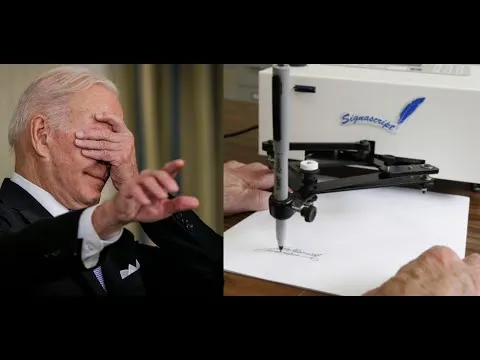BREAKING: Newly Unveiled Emails From The Biden White House Show…
Internal emails reveal that President Joe Biden may not have personally reviewed or signed off on mass clemency documents. The messages show that aides used an autopen to affix his signature and later scrambled to confirm whether the content matched his supposed intentions.
Biden had verbally approved the commutations on January 11, but the autopen was not used until January 17—creating a critical six-day gap. During that period, staffers were unsure whether the documents accurately reflected the president’s will.
One staffer urged confirmation from the deputy assistant to the president, asking for a direct email stating that Biden had signed off on the specific documents. Without that, the staff said they would not proceed.
A deputy counsel added that the president “doesn’t review the warrants.” That statement alone raises serious questions about how the clemency process was managed at the highest level.
A senior official in the White House counsel’s office agreed and said they needed confirmation that the documents were accurate before using the autopen to simulate Biden’s signature.
The clemency actions were publicly announced just hours after that late-night scramble—at 4:59 a.m. on January 17. The urgency and timing made it clear that the process was anything but routine.
Further complications arose from the language in the clemency documents. The use of vague wording such as “offenses described to the Department of Justice” led to concern from DOJ lawyers that the documents could be considered legally insufficient.
One high-ranking DOJ official noted that the language was highly problematic and that they would need a statement from the president on how to interpret it.
That same official criticized the White House narrative that the clemency recipients were all “non-violent drug offenders.” He stated clearly that this was untrue or at least misleading, noting that several individuals had violent criminal records.
He further revealed that the Department of Justice did not receive the names of the approximately 2,500 inmates until just minutes before the announcement, leaving no time for proper vetting.
One controversial case involved an individual with a record that included the murder of a woman and her two-year-old child. His inclusion on the list sparked outrage among DOJ personnel.
While the use of an autopen is not new, the lack of presidential review in this case raises serious governance issues. Even ceremonial uses of the autopen have typically involved documented approval from the president.
In public remarks, Biden later said he had made each clemency decision personally, including the categories that shaped the selection. He did not, however, deny that the documents were finalized without his review.
Former President Donald Trump weighed in on the controversy, stating that the pardons should be considered void because Biden didn’t personally sign them. He also claimed Biden knew nothing about them, although he provided no evidence.
Congressional Republicans, already skeptical of Biden’s leadership, have launched investigations into the use of the autopen and the broader question of Biden’s cognitive fitness.
Several former aides who were subpoenaed by investigators have invoked their Fifth Amendment rights, further intensifying speculation that information is being withheld from the public.
Conservatives argue that this episode is a warning sign about who is really running the executive branch. If critical constitutional duties like the pardon power are being outsourced, accountability vanishes.
The Constitution is clear: the president alone holds the power to grant pardons. Delegating that power to staffers or mechanical devices without documented consent undermines the rule of law.
The last-minute rush to secure an email from a subordinate, rather than a signed document from the president, signals a breakdown in executive function.
Legal experts argue that autopens are acceptable only when their use is backed by clear presidential instruction. In this case, even staffers admitted they did not have that documentation.






